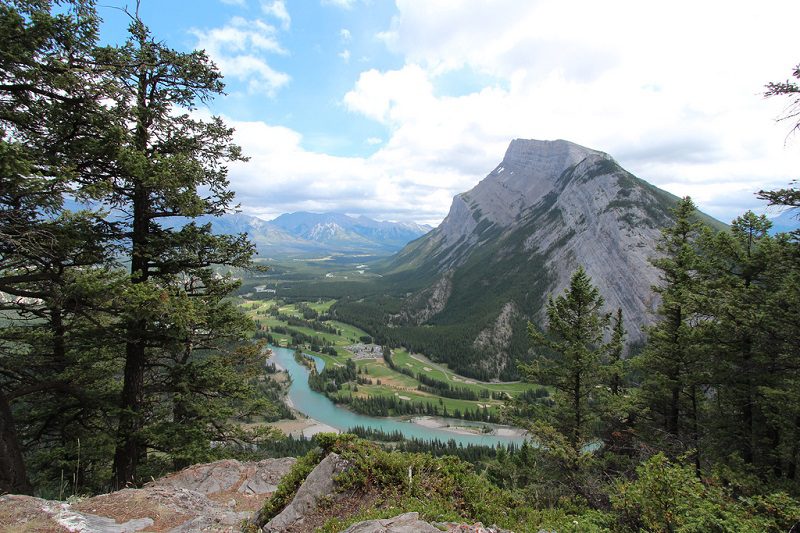Canmore, Banff test out new infrastructure as Alberta’s Bow River Valley sees bike lane renaissance
Over the last few weeks, communities in the Bow River Valley have seen dozens of kilometres' worth of dedicated bike lanes, parking stalls and maintenance stations installed throughout the region


Bike lanes are appearing in more places than just Canada’s larger metropolitan centres, the Calgary Herald reported this week.
Over the last few weeks, communities in the Bow River Valley have seen dozens of kilometres’ worth of dedicated bike lanes, parking stalls and maintenance stations installed throughout the region, including in Canmore and Banff. According to municipal officials, it’s all about encouraging a more active plan of transportation — and one of the most beautiful places in the country is a good place to embrace such a strategy.
Chad Townsend, the Town of Banff’s environmental manager, gave the Calgary Herald a taste of his own community’s new — albeit temporary — infrastructure by bike. “[This] bike lane,” Townsend said, saddling up, “is one part of an overall plan of trying to encourage active transportation.” Riding out, Townsend showed reporters along the two-way lane, opened on Aug. 25 on Banff Avenue. Marked with removable paint and visible poles, the bike lane connects the town with its network of trails. It will be in place for two months, reports say, as a meter of sorts for the municipality to use in cementing a more permanent master plan.
As it stands now, that master plan is in its initial phases, having so far identified a few places in Banff where cyclists could be better served by more dedicated infrastructure. The presence of that temporary test lane, itself based on models seen in cities like Calgary, has prompted a response, the Herald reports, that similarly mirrors the reception of bike lanes in bigger centers. Residents have decried their appearance; cyclists, on the other hand, approve.
 “It is a change,” said Karen Soresen, Banff’s mayor, “and I know we’re going to receive different feedback, but it’s important to remind people this is a trial.” The municipality’s efforts, she says, has been on ensuring that cyclists feel safe getting around the area by two wheels — although she concedes that she has yet to try them out for herself.
“It is a change,” said Karen Soresen, Banff’s mayor, “and I know we’re going to receive different feedback, but it’s important to remind people this is a trial.” The municipality’s efforts, she says, has been on ensuring that cyclists feel safe getting around the area by two wheels — although she concedes that she has yet to try them out for herself.
“I haven’t been on them yet on my bike,” she said, “but I would certainly feel safer in that circumstance.”
Canmore, as reported, is also one of the Bow Valley communities that has seen a surge of activity related to the introduction of bike lanes and other cycling-friendly infrastructure. The town has installed twenty-five kilometres’ worth of shared or dedicated bike lanes on local roads, with officials saying that opening the town to more than just cars is a vital, necessary way forward. Citing Canmore’s active population, the town’s engineering manager, Andy Esarte, told the Herald that making more of the municipality accessible means making it friendlier to bikes.
Further bike-friendly overhauls to Canmore infrastructure, reports say, include the introduction of parking stalls for 280 bikes throughout the downtown core of Canmore, as well as the installation of bike maintenance stands across the city.
